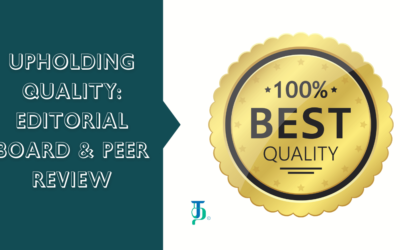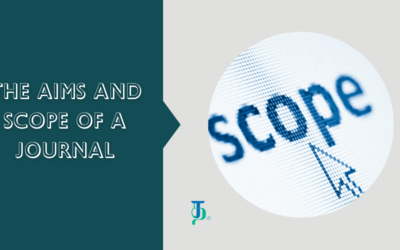As part of the Peer Review Week 2023 celebrations, we will see in this article how manuscript preparation can help in a breezy peer review and in enhancing the chances of acceptance and overall quality.
Navigating the peer review process is a pivotal juncture for authors seeking to publish their work in academic journals. Understanding the peer review process, adhering to journal guidelines, and crafting a well-structured manuscript are the foundational steps for smooth navigation during the peer review process. At later stages, the authors need to engage constructively with peer reviewers, view their feedback as an avenue for improvement, and thoroughly revise the manuscript based on their insights. Embracing rejections as opportunities for growth, seeking mentorship, and staying informed about publishing trends further enrich the author’s journey. By arming you with these insights, this and the next articles empower you to navigate the peer review process confidently and succeed.
Conform to the submission guidelines
Preparing your manuscript that conforms to the submission guidelines is pivotal in ensuring smooth navigation through the peer review process.
Each journal has its own set of requirements concerning formatting, citation style, word count, and even the ordering of sections. Start by carefully reviewing your target journal’s submission guidelines and formatting requirements. Adhering to journal guidelines is an indispensable part of manuscript preparation, underscoring the need to meticulously read and follow the instructions outlined by the target journal. These guidelines serve as a roadmap, offering authors precise directions on structuring and presenting their research for seamless evaluation.
Neglecting these instructions can lead to unnecessary delays or, in some cases, outright rejection during the initial screening phase. Journal guidelines also extend to ethical considerations and disclosure requirements, demanding transparent reporting of conflicts of interest, funding sources, and ethical approval.
Authors must prioritize this preliminary step and demonstrate their attentiveness to detail and adherence to the standards set by the academic community. Ultimately, aligning one’s manuscript with the stipulated guidelines is a fundamental display of professionalism, showcasing an author’s ability to meet scholarly expectations and paving the way for a smooth review process that ultimately benefits both the author and the academic journal.
Structure your manuscript
Clarity and structure in a manuscript are the bedrock of effective communication, pivotal in how the research is perceived and evaluated during the peer review process. A well-structured manuscript is akin to a well-organized argument, presenting a logical progression of ideas and findings that guide the reader effortlessly through the research journey. Clear and concise writing is equally paramount, ensuring that complex concepts are articulated in an easily understandable manner, minimizing ambiguity.
Reviewers seek clarity to easily grasp the research objectives, methodologies, results, and conclusions. A clear, well-structured manuscript showcases the author’s acumen in presenting the work in a coherent, reader-friendly manner. This approach not only benefits the reviewers but also enhances the manuscript’s overall quality.
An organized manuscript aids in highlighting the significance and novelty of the research, guiding the reviewers to the salient points, and contributing to an easy and thorough evaluation. Conversely, poorly structured or convoluted content can frustrate reviewers, potentially leading to misinterpretations or overlooking of critical elements. Therefore, envision your manuscript as a roadmap and strategically guide the reviewer through the research landscape. In doing so, you facilitate a smoother evaluation process and ensure that the reviewers can focus on the scholarly content and assess its merits accurately.
Therefore, investing time in refining the clarity and structure of a manuscript is an investment in successful peer review, advancing the manuscript’s prospects of publication while upholding the standards of effective academic communication.
Place ideas and arguments strategically
Manuscript preparation for seamless navigation through the peer review process involves not only structural and formatting considerations but also strategic placement of ideas and arguments to enhance the manuscript’s quality and acceptance likelihood.
Begin by meticulously organizing your manuscript, ensuring a logical flow from the introduction to the conclusion. Clearly state your research hypothesis, objectives, and methods, emphasizing the novelty and significance of your study within the context of existing literature. Prioritize clarity and conciseness, avoiding jargon, and fostering an engaging narrative.
Furthermore, conduct an in-depth literature review, showcasing a comprehensive understanding of existing research and positioning your study appropriately. Develop a robust methodology and articulate it clearly to allow for reproducibility. Scrutinize your results meticulously and present them using appropriate figures, tables, or graphs. Discuss the implications of your findings, acknowledging limitations and suggesting future research directions. Collaborate with mentors or colleagues for critical feedback and revisions, honing the manuscript before submission.
Seek professional help
One of the primary reasons for article rejection is poor language. To avoid this, engage in a meticulous editing process, focusing on grammar, syntax, and style while verifying citations and references. It is a good idea to seek the services of a professional copyeditor, a professional trained to ensure the 4Cs of copyediting: correctness, consistency, coherence, and clarity.
Additionally, consider pre-submission peer review services, which provide expert feedback, which will further enhance the manuscript’s quality. You will receive a thorough review of your manuscript and advice about how the manuscript can be modified to facilitate acceptance.
By incorporating these advanced strategies, your manuscript will not only meet the basic submission requirements but also exhibit scholarly rigour, increasing its chances of successful navigation through the peer review process.



